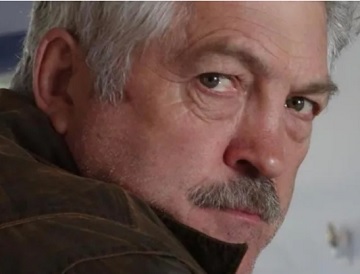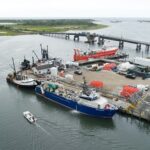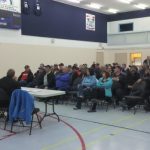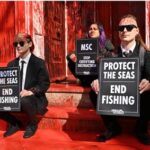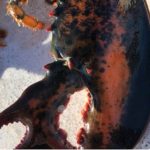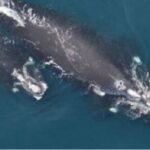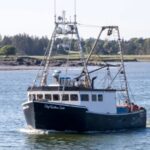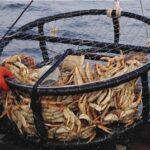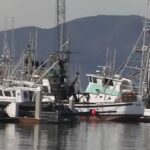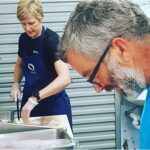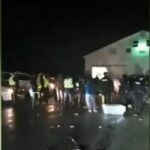Tag Archives: Newfoundland
FFAW Demonstrations Tomorrow (Monday)
FFAW-Unifor is holding demonstrations for all members and community supporters on Monday, March 28 at 11 am at the Confederation Building in St. John’s & Civic Centre in Corner Brook to call attention to unfairness in the setting of fish prices. For years we have asked the provincial government to move forward with policies that would hold processing companies more accountable and to increase competition in fish processing. In particular, we have demanded: >click to read< 20:30

Newfoundland skipper convicted of trying to throw woman overboard didn’t suffer a miscarriage of justice
The Supreme Court of Canada has sided with the Crown in the case of Trent White and agreed with the lone Newfoundland and Labrador Court of Appeal judge who had disagreed with the decision to allow White a new trial, rejecting his argument that his previous defence lawyer had been inadequate. White was convicted in 2018 of aggravated assault, assault and damage to property related to incidents that had occurred on a commercial fishing boat during the 2017 turbot fishery. The 65-foot vessel had left Rocky Harbour for the Labrador Sea near Red Bay and was travelling in the Strait of Belle Isle when White reportedly tried to throw a crew member, his girlfriend, overboard. >click to read< 09:52

Newfoundland fisherman says DFO disregarded his 60-year fishing career
The small longliner June and Judy sits at the wharf in the sheltered inlet, awaiting the start of cod fishing season. Her owner, Winston Boutcher, can keep an eye on her from the window of his living room across the harbour. He knows this boat well. It’s a family legacy. The 28-foot fishing boat has been taking him to the cod grounds in Placentia Bay for many years. He and his brothers used to own her, equal partners in their inshore fishing enterprise. The Boutcher brothers remained equal in all things, until 1995. That year DFO adopted a policy that created two classes of fishing licences: core and non-core. >click to read< 14:59
Personal locator beacons – New coalition is making the devices cheaper for fishermen
There have been 20 fatalities in the province’s fishing industry over the past 10 years, and the bodies of five of those fishermen have never been recovered. So the Newfoundland and Labrador Fish Harvesting Safety Association has partnered with the Fish Harvesters’ Resource Centre, the Professional Fish Harvesters Certification Board, and the Fish Food & Allied Workers union to subsidize the cost of 2,500 beacons. Video, >click to read< 09:20

Northern Shrimp Assessment Fails to Capture True Picture of Stock Health
The Department of Fisheries and Oceans (DFO) science department delivered a technical briefing to industry this morning detailing the most recent stock assessment for northern shrimp. FFAW-Unifor continues to call on the Department to reassess the Limit Reference Point (LRP) for northern shrimp and incorporate harvesters’ observations in science assessments. “The LRP is set at a time when cod and other groundfish were at very low levels. Expecting the species to rebound to that level when the marine environment is now completely different is short-sighted. We need to consider the entire marine ecosystem when establishing rebuilding plans,” says FFAW-Unifor President Keith Sullivan. >click to read< 18:27

F/V Villa de Pitanxo: Repatriation of dead sailors stalled after bodies test positive for COVID-19
Some of the bodies of Spanish and Peruvian sailors who drowned in a shipwreck off Newfoundland’s coast last week are reportedly not being returned to their families right away because their corpses tested positive for COVID-19. The Spanish fishing vessel Villa de Pitanxo sank 460 kilometres off the coast of Newfoundland on Feb 15. Three fishermen were rescued and nine bodies were recovered, with 12 still missing. Four of the bodies, including two Spaniards and two Peruvians, reportedly tested positive for COVID-19 after being recovered. >click to read< 11:07

F/V Villa de Pitanxo: Manuel Navarro to his sister, “Don’t tell dad, this is hell, a very big storm”
“Don’t tell dad or mom, but this is hell, a very big storm,” José Manuel Navarro, the biologist at Villa de Pintaxo, told his sister Mónica last Saturday in what was his last communication before the shipwreck of the fishing boat, which occurred on Tuesday. Desperate for the lack of news, José Navarro, the father of the scientist on board, and Mónica, the sister, have asked the Government through Canarian Television to mobilize media to that area of the Atlantic, opposite Newfoundland, to search for the remains of the fishing boat and the missing crew members. >click to read< 07:57
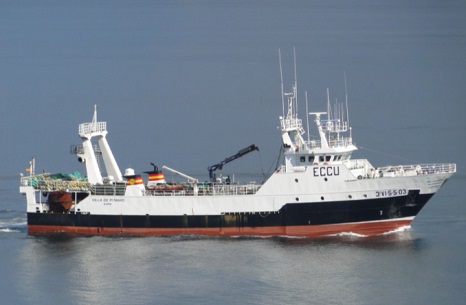
F/V Villa de Pitanxo: Deadly sinking of trawler blamed on main engine failure
A Spanish fishing trawler sank in stormy waters off Canada last week, leaving 21 sailors dead or missing, because its engine failed, the owner of the vessel said Monday. There were 24 people onboard the Villa de Pitanxo when it went down off the eastern coast of Canada early on Tuesday in Spain’s worst fishing tragedy in nearly 40 years. Padin has said the accident happened when the ship attempted to turn, the Nores Marin group, the company based in Spain’s northwestern region of Galicia which owns the ship, said in a statement. “The main engine suddenly stopped, leaving the boat without propulsion or direction, exposed to the wind and the waves, suffering blows from the sea that caused it to tilt and sink very quickly,” >click to read< 16:16

F/V Villa de Pitanxo: Survivors, bodies from sunken Spanish fishing vessel to be repatriated this week
Spanish officials arrived in Newfoundland and Labrador on Sunday to begin the process of repatriating the survivors and the bodies recovered from the sinking of a Spanish fishing vessel. Deputy Premier Siobhan Coady greeted members of the flight crew after they arrived in the province. Meanwhile, Alfredo Martinez Serrano, the Spanish Ambassador to Canada, landed in St. John’s late Saturday afternoon. The Villa de Pitanxo fishing vessel sank in heavy seas off the coast of Newfoundland early Tuesday. >click to read< 08:11
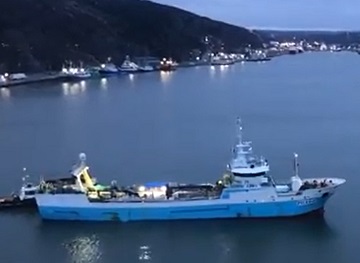
F/V Villa de Pitanxo: Fishing vessel arrives in St. Johns with three survivors and seven deceased crewmen
The F/V Playa de Menduíña II, in which three survivors and seven of the deceased of the F/V Villa de Pitanxo were traveling, docked at 11.30 a.m. on Saturday in the port of San Juan de Terranova (St John’s). On F/V Playa de Menduíña II traveled the survivors of the F/V Villa de Pitanxo, the skipper of the ship, Juan Padín; his nephew, Eduardo Rial Padín; and the young Ghanaian Samuel Kwesi. After carrying out the appropriate procedures, the three left the Vigo fishing boat after five o’clock in the afternoon, six hours after the arrival at the port. After going down to port, the three were taken to an area hospital for a medical check-up. >click to read< 17:31
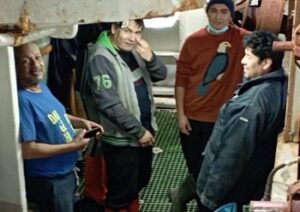 The crew of the F/V Villa de Pitanxo, one by one: from Raúl, only 24 years old, to Francisco, of retirement age – Little by little, the identities of those who were on board the ship that sank in Newfoundland and their stories are becoming known. Most have young children and some, like Samuel, had not yet been able to meet their last baby. >click to read<
The crew of the F/V Villa de Pitanxo, one by one: from Raúl, only 24 years old, to Francisco, of retirement age – Little by little, the identities of those who were on board the ship that sank in Newfoundland and their stories are becoming known. Most have young children and some, like Samuel, had not yet been able to meet their last baby. >click to read<

Pope Francis Laments ‘Tragic’ Shipwreck of F/V Villa de Pitanxo
“The Holy Father expresses his heartfelt condolences, as well as his solidarity, in these moments of sorrow.” The pope “prays to God for the eternal repose of the victims and expresses his closeness to the families who mourn their loved ones,” The Galicia-based trawler Villa de Pitanxo sank early Tuesday some 250 miles off the coast of Newfoundland with just three known survivors out of a crew of 24, making the disaster Spain’s worst fishing tragedy in 38 years. Current theories suggest that the ship, which was loaded with a good catch of halibut, was weighed down at the stern and, complicated by waves reaching eight meters in height, was flooded and sank in a matter of minutes. >click to read< 09:01

F/V Villa de Pitanxo: survivors en route to Canadian port of St. John’s
Three survivors from a Spanish fishing trawler that sank hundreds of miles off the coast of Newfoundland, Canada, were en route to this port city on Thursday amid stormy conditions. The Spanish vessel F//V Playa de Menduiña II that is transporting those survivors and seven of the recovered bodies is expected to arrive in St. John’s, capital of Newfoundland and Labrador province, on Saturday, the port authority told Efe. The remains of two other recovered bodies are being transported by the Canadian vessel Nexus, which is expected to reach that same port city on Friday. >click to read< 09:14

F/V Villa De Pitano: ‘Please keep looking’, families beg as hunt for Spanish shipwreck crew ends
“We have to keep looking for the bodies, we can’t leave 12 people stranded in the sea,” said John Okutu, uncle of Edemon Okutu, one of the crew members from Ghana who is among the missing. “If Canada can’t keep on looking, the Spanish must go, that’s what the families want,” he told journalists in Marín in the northwestern region of Galicia where the vessel was based. Standing at his side, Kevin Franco, the son of Regelio Franco, one of the missing Peruvians, agreed. >click to read< 09:15
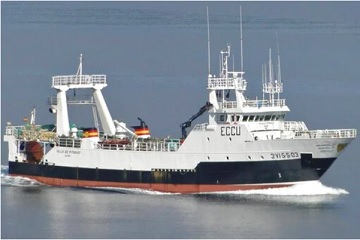
Newfoundland: Search suspended for missing crew members of F/V Villa De Pitano
After a 36-hour search of the frigid North Atlantic waters, the Joint Rescue Co-ordination Centre and the Canadian Armed Forces have suspended their search for the missing crew members who were onboard the sunken Spanish fishing vessel. “This is the end of an active search,” said Lt.-Cmdr. Brian Owens, a spokesman for the Halifax Joint Rescue Co-ordination Centre via Zoom. “All vessels, all aircraft that were participating in this search and rescue have been returned to home base. The 24-member crew included 16 members from Spain, five from Peru, and three from Ghan. They were fishing in international waters, some 460 kilometres east of St. John’s, N.L. >click to read< 19:01

Mourning in Galicia following the loss of a trawler off Newfoundland: ten dead and eleven missing
The Xunta of Galicia, the government of the northeast of Spain will declare a day of mourning in the region following the sinking of the trawler F/V Villa de Pitanxo off Newfoundland, with the loss of ten lives and another eleven who remain missing. The tragedy occurred on Tuesday in the midst of a North Atlantic storm, and despite a huge rescue effort only three out of 24 crew members managed to survive under hypothermal conditions. Search operations are ongoing. Marine resources include three fishing vessels, an offshore supply ship, a coast guard vessel, and a Canadian navy frigate. Air resources include three helicopters rotating in and out depending on crew and fuel needs, two Hercules aircraft, and one PAL aircraft. >click to read< 07:59
Search continues off N.L. coast for 11 missing crew members of Spanish fishing vessel – Lt.-Cmdr. Brian Owens of the Joint Rescue Coordination Centre in Halifax told CBC News on Wednesday morning the search and rescue effort is ongoing. >click to read<12:46

UPDATED: Spanish fishing boat sinks off Canada; 7 dead, 14 missing
A Spanish fishing boat sank early Tuesday in rough seas off Newfoundland,,, The 50-meter (164-feet) long fishing boat named F/V Villa de Pitanxo, which operates out of northwest Spain’s Galicia region, sank in the dark (around 0600 GMT, 1 a.m. EST), Survivors include vessel’s 53-year-old skipper and his 42-year-old nephew, according to La Voz de Galicia newspaper. The two men contacted their families by phone, A rescue center in Halifax, Nova Scotia, operated by Canada’s air force and coast guard, dispatched a helicopter, a Hercules-type aircraft and a rescue vessel to the area, which is 450 kilometers (280 miles) off the island of Newfoundland. >click to read< 14:49

Search Underway for Crew of Spanish Fishing Trawler That Sank Off Newfoundland
International reports indicate a Spanish fishing trawler sank approximately 450 km off the east coast of Newfoundland in the early morning hours and a search is underway for the vessel’s crew. Spanish and American media are reporting that life rafts have been located and at least four people are dead. The Voice of Galicia is reporting that the Villa de Pitanxo, which sank shortly after midnight Newfoundland time, has a crew of 24, and while three survivors have been located, there are a number of fatalities. >click to read<
Several Dead As Spanish Fishing Boat Sinks Off Canada: Coastguard – Rescuers saved three crew members and were continuing to search for survivors after the Spanish fishing sank off Canada’s east coast. >click to read< 09:16
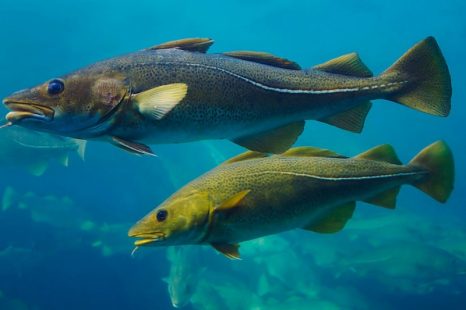
Fishermen not feeling the effects of ‘marked decrease’ in Atlantic cod population
What started as a research presentation on rising ocean temperatures and decreasing cod supply by NOAA quickly turned into a revealing conversation about how scientists and their data often do not reflect fishermen’s experiences. Findings by a working group of researchers indicated that the lifecycle of the species is being influenced by the environment, specifically rising ocean temperatures, which have changed the fish’s spawning behavior and their predator-prey relationships. Fishermen did question is whether these facts are having the same implications that the researchers believe. Al Cottone, a Gloucester fisherman, says he feels cod are in different areas, and that he has noticed a change in the tides, too. >click to read< 10:56
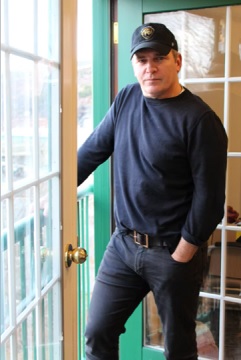
DFO responds to Ryan Cleary’s allegations of a ‘backroom’ plan
The interim executive director of Seaward Enterprises Association of Newfoundland and Labrador accused the Department of Fisheries and Oceans of orchestrating a “backroom” plan to rebuild the cod stock off southern Newfoundland and exclude the voice of inshore harvesters. According to Cleary, DFO has assembled a working group, made up of DFO and FFAW union officials, fish processors, indigenous interests and the offshore, sector to develop a rebuilding plan for cod in the 3Ps fishing zone. An official for DFO, however, says when DFO established the working group they invited members of the 3Ps Groundfish Advisory Committee to participate. >click to read< 13:32

Harbour Breton in Mourning Following Fatal Fishing Accident
The town of Harbour Breton is in mourning after a fishing accident took the life of a man over the weekend. Three men were aboard the scallop vessel on Sunday morning when it overturned near the community. Robert Hynes, training officer with the Harbour Breton Fire Department, describes how one of the men was able to swim to shore and get help. He says the boat was situated in the middle of a sheltered part of the bay. The man swam through the frigid water, and once on land walked through the woods to get to a cabin. >click to read< 10:35
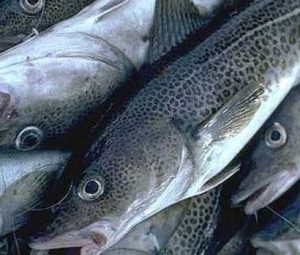
SEA-NL condemns DFO’s backroom plans for rebuilding south coast cod stock
Seaward Enterprises Association of Newfoundland and Labrador (SEA-NL) accuses Fisheries and Oceans of orchestrating a “backroom” plan to rebuild the cod stock off southern Newfoundland and exclude the voice of inshore harvesters. “Any rebuilding attempt that does not include the input of the inshore fleet is doomed,” says Ryan Cleary, SEA-NL’s interim Executive Director. “When DFO leaves inshore harvesters out of the equation they get the math and science wrong, and the department is doing it again.” >click to read< 10:37
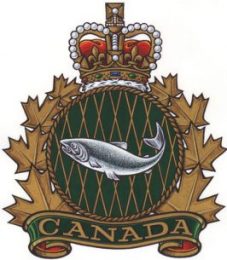
One Person Dead After Scallop Vessel Overturns Near Harbour Breton
One person is dead following a fishing accident near Harbour Breton on Sunday. According to the Department of Fisheries and Oceans, a scallop vessel with three people on board overturned Sunday morning. One of the three swam to shore for help, while the other two people stayed with the overturned vessel. The two people were recovered following a local rescue effort. >click to read<, more info, >click to read< This story will be updated 09:23
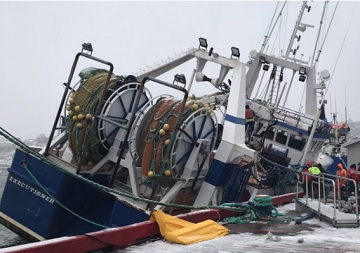
Updated: Crews Save Sinking Vessel Taking on Water in St. John’s Harbour
Crews were able to save a vessel from sinking after it began taking on water in St. John’s Harbour, but the feat was no easy task. The scene on the waterfront was dramatic Thursday morning with the ship listing badly against the side of the dock. Crews were eventually able to stabilize the ship, and no fuel from the vessel escaped into the water. >click to read< – Sinking fishing vessel stabilized in St. John’s harbour amid 1st winter storm – “We feel we’re in control now, and I guess the next step for owner and crew is to determine where the water was coming in and get a grip on that,” English said. In a statement, the coast guard said it had stabilized the vessel by mid-afternoon that the owner had identified and fixed the leak. >click to read< 09:35
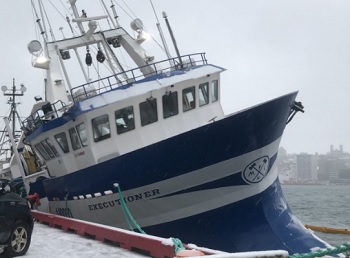
Fishing Vessel Taking on Water in St. John’s Harbour
Over a dozen coast guard workers are on the scene of a capsizing fishing vessel in St. John’s harbour Thursday morning, trying to save the boat from sinking as it takes on water. The crew is using hoses to pump water from the Executioner as it lists dangerously on the south side of the city’s wharf. >click to read< – A frantic effort is underway on the St. John’s waterfront to save a fishing vessel listing dramatically on the South Side. The Coast Guard environmental response team is on scene along with about 15 workers frantically trying to pump out the hold which has filled with water due to an apparent leak. photos, >click to read< 10:14

NLGIDC provides commentary on the latest scientific assessment for 3Ps Cod
The stock is currently at a low level and growth of this important resource is being impeded by high natural mortality. Jim Baird, The Chairman of the NLGIDC said, “The level of natural mortality has been at the highest levels ever recorded for this stock in the most recent time period.” Baird continued, “Having a better understanding of the processes related to natural mortality is important to provide scientists the ability to make accurate projections related to stock growth.” It is clear that seals eat substantial quantities of cod and many industry representatives believe that seal consumption is likely contributing to this high natural mortality, however DFO scientists are not convinced this is the case. >click to read< 19:56

How Grand Bank made the ‘Grandy dory’ a Newfoundland icon
During the late 1800s and all of the 1900s, the small boat of choice along the south and southwest coasts of Newfoundland and Labrador was the dory.,, Simeon Lowell of Salisbury Point, Mass., is credited with inventing the dory in 1793. Over the ensuing decades these small, shallow draft, flat bottom boats measuring five to seven metres long, became so popular and were in such demand for fishing along the eastern seaboard that eventually “dory factories,” where they were mass-produced, were established. Around the same time schooners from Nova Scotia also took advantage of the lucrative fishing on our offshore banks followed by our own fishermen in 1891, led by Samuel Harris and at least 16 other schooner owners from Grand Bank. photos >click to read< 11:28
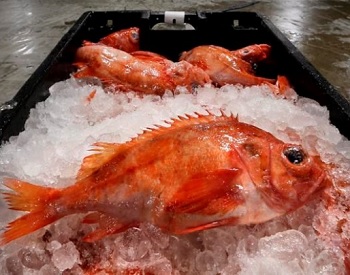
Redfish return sparks Atlantic race to cash in on reopening of commercial fishery
The centre of attention is a large section of the gulf known as Unit 1, stretching from the western coast of Newfoundland across to Quebec’s Gaspé Peninsula and down toward the northern tip of Cape Breton. A federal Fisheries Department moratorium on commercial fishing of redfish was imposed in the area in 1995 and has remained in place ever since. But from 2011 to 2013, research showed that three robust redfish cohorts had propelled growth in the overall stock. “There’s probably more redfish in the Gulf of St. Lawrence now than we’ve ever seen in our recorded history,” >click to read< 07:19
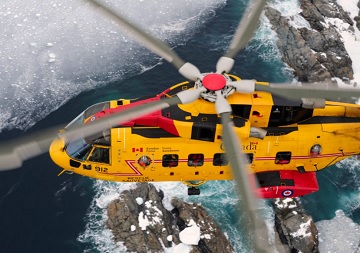
RCAF marks 20th anniversary of the Cormorant
On the Oct. 11, 2021, the Royal Canadian Air Force’s CH-149 Cormorant fleet of AW101 helicopters celebrated 20 years since the aircraft’s initial delivery to Comox, British Columbia. This significant milestone compliments the fleet’s recent achievement of 100,000 flight hours. Since delivery of the CH-149 Cormorant helicopters, the Royal Canadian Air Force has been performing thousands of life saving missions throughout Canada, from the peaks of snowy windswept mountains, the east and west maritime coasts, to the high Arctic as well as internationally – providing humanitarian support. >click to read< 11:59
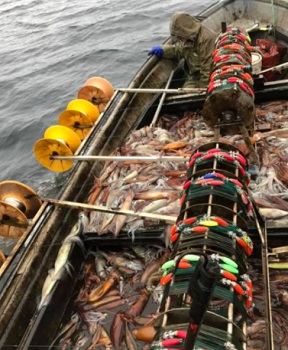
The Squid Tsunami in Newfoundland
Thousands of pounds of the tentacled invertebrate are so plentiful this year they’ve been washing up on beaches around the island of Newfoundland. In fact, the amount of squid landed this year will likely double last year’s landings, according to Derek Butler.,, “It’s huge landings this year and it’s more than we need, to be quite blunt,” he said, adding squid landings have also been good in Argentina, which also supplies the bait market. Some Newfoundland processors have already stopped buying. >click to read< 10:47






